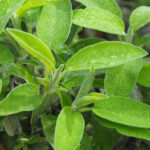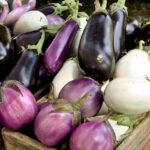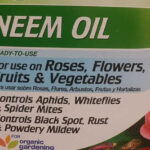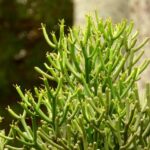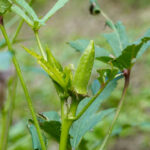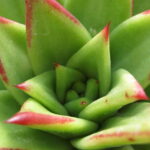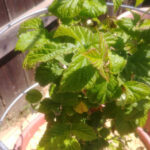Have you ever seen a sesame plant? Surely you’re familiar with sesame seeds, sesame oil, and tahini. But have you tried growing sesame plants for sesame oil yourself? If not, here’s your chance!
Sesame or Sesamum indicum is grown all over the world as a food crop in hot dry areas, like India and Africa. There are records of its growth in China over 5000 years ago. Tahini, a well-loved food (not just among people in the Mediterranean and the Middle East), is ground sesame seeds. Search for sesame seeds and you’ll find them almost any place.
Whether you want to share seed from your garden with family or you want to grow a drought-tolerant plant, sesame is for you. Sesame’s stalks grow up to three feet tall, and its bell-shaped flowers are lovely to look at. Search local seed distributors for your favorite variety and you’ll have a fresh crop of seeds in 13 weeks!
Quick Care Guide
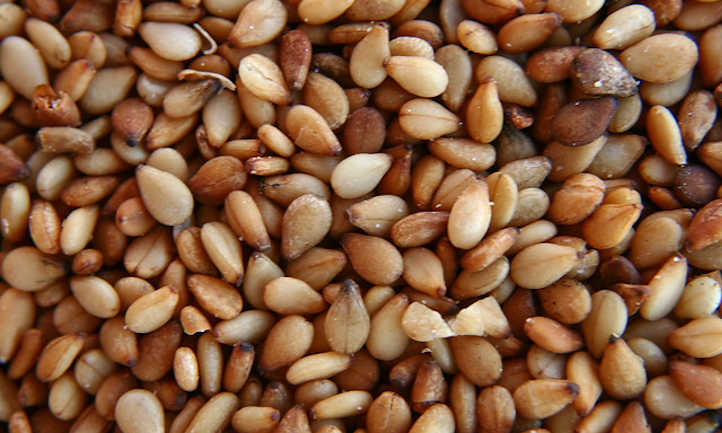
| Common Name(s) | Sesame, benne, gingelly, sim sim, til |
| Scientific Name | Sesamum indicum |
| Days to Harvest | 90 to 110 days or 13 to 16 weeks |
| Light | Full sun |
| Water | 16 to 18 inches annually |
| Soil | Fertile, well-drained with a pH of 5 to 8 |
| Fertilizer | High nitrogen slow release and foliar feed |
| Pests | Aphids, leafhoppers, thrips, cutworms, leaf rollers |
| Diseases | Phyllody, phytophthora blight, dry root rot, alternaria blight, damping off |
All About Sesame
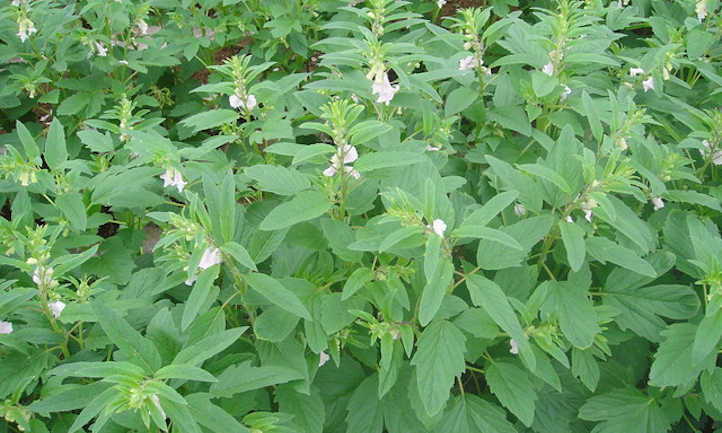
Sesamum indicum is commonly known as sesame, benne, gingelly, sim sim, and til. This drought-tolerant flowering plant originates in India and grows wild in Africa and other tropical regions around the world. It’s a staple of Middle Eastern cuisine and medicine with origins many hundreds of years ago.
Sesame plants are beautiful. Green leaves grow opposite on a central stem. Your sesame may reach up to 3.5 feet tall. They produce a beautiful white, pink, blue, or purple bell-shaped flower that emerges from the pedicel. When it’s harvest time, flowers become fruit that dry and form seed capsules.
Sesame plants produce fruit annually and are slow to grow from seed. It’s recommended growers start sesame seeds indoors in early spring or late winter. They bloom in summer, and fruit before the first frost. Pods are collected before they open and placed in a container to prevent shattering. The seeds are small, less than 3 millimeters, and range in color from white to dark brown or black. Most people cultivate benne for seeds and oil. The leaves of a benne plant are edible, but they are bland in flavor.
In Japan, sesame seeds have a long history. Japanese foods incorporate this crop in many forms: fermented, pressed, and ground for seasoning.
Sesame has purported medicinal applications around the world. For example, in Taiwan, sesame oil is used to prevent inflammation. Using this oil instead of olive or canola oil may decrease high blood pressure. It’s sold in capsules for supplementary value because each seed contains properties highly beneficial to health.
Some varieties of sesame plants produce multicolored seeds, like Black and Tan Sesame. This sesame plant blooms pink bell-shaped flowers and pods contain black and tan sesame seed.
Planting Sesame Plant
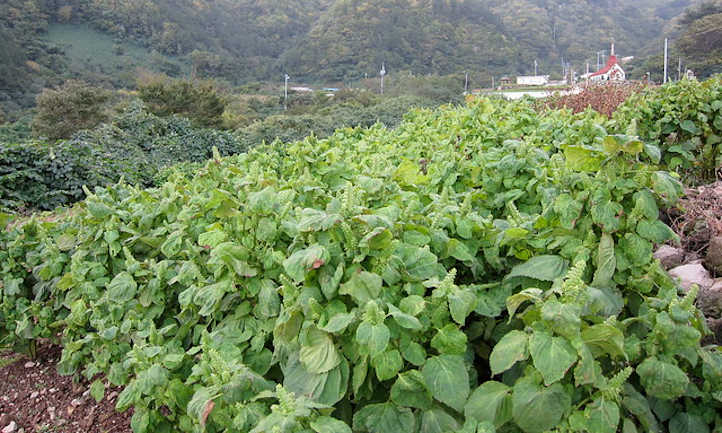
Plant sesame seed indoors at least two months before summer, or outdoors just after the last frost. This gives benne adequate time for germination. Sesame plants need full sun throughout the growing season, and slightly alkaline, well-draining, and somewhat fertile soil. Young seeds need moist conditions at first.
For maximum yields, plant sesame plants in large swaths. They can also be cultivated in containers. Yields are smaller in pots, but crops can be substantial if planting in the garden is not possible. A good number of seeds come from just one plant.
If the pod goes through a process of shattering, you might unwittingly spread sesame more than you want. If you’ve decided to plant in the ground rather than in containers, a shatter-resistant variety may be better suited to your needs. However, non-shatter-resistant varieties do better in containers.
Planting sesame seeds is easy. Just place seeds less than one inch under a soil-less growing mix and keep them moist until they germinate. After germination, reduce watering to once per week. Keep seeds in temperatures right around 70 degrees Fahrenheit.
Care

Sesame or benne plants are easy to care for and require little extra attention beyond providing the right conditions. As long as your soil, sun, and moisture content is right, you’re good to go.
Sun and Temperature
Sesame plants like full sun, or six hours of direct sunlight per day. Flowers bloom in the heat of summer but seeds prefer to start in soils at temperatures of 65 to 75 degrees. Sesame plants enjoy zones 10 and above. Sesame appreciates high heat once plants are established, but does best in temperatures of 77 to 80 degrees. Higher heat causes quicker fruiting. Sesame is a hot weather plant. Once plants experience temperatures under 58 degrees, damage occurs and crop production decreases. Intense cold easily kills a plant. Snap freezes in spring require frost cloth.
Water and Humidity
Sesame, Sesamum indicum needs little moisture as a drought-tolerant plant. Just a few hours of standing water can kill a sesame plant. Annually, wild sesame plants only get about 16 to 18 inches of rain. Water the soil well before planting sesame. Too much watering can cause the seed capsules to shatter.
When you water throughout the growing season, provide a spritz of water on the soil surface in the morning. Containers will make soil dry out more quickly, so provide just a little more water for sesame plants in pots. For this kind of crop, a gentle and brief watering with a soaker hose works just fine. Anytime the season is wet and rainy, do not water sesame plants. Too much moisture prevents growth. If you’re not sure what kind of spring season you’ll have, try planting in a container and moving inside when moisture increases.
Soil
Sesame or benne appreciates well-drained, fertile soils. Avoid planting in heavy clay soils with high salinity content, as this will lower or halt crop production. The optimal pH for sesame plant soil is 5.6 to 8; neutral soils are best for this plant.
Fertilizing
Sesame enjoys high nitrogen foliar feeds throughout the growing season. Apply more nitrogen fertilizer in regions that have more rainfall. Only apply fertilizers before flower and fruit production begins. One way to ensure success with Sesamum indicum is to prepare the soil with fertilizers before planting. Add potash and phosphorus where soils receive less annual rainfall. For home gardeners, a high amount of organic material in the soil may lessen fertilizer needs.
Pruning
Sesame, Sesamum indicum plants don’t need maintenance pruning. If they look long or have developed a disease due to excess moisture, prune leaves as needed. Leave enough foliage to allow plants to photosynthesize. Simply snap off leaves as needed while allowing bell-shaped flowers to remain.
Propagation
Planting sesame seeds is the only way to propagate benne plants. Plant seeds from a recent harvest, or try planting seeds from the grocery store. Although it’s possible to direct sow seeds, start them indoors as described in the planting section. Use a soilless medium, and provide moisture until seeds germinate, then taper off.
Harvesting and Storing
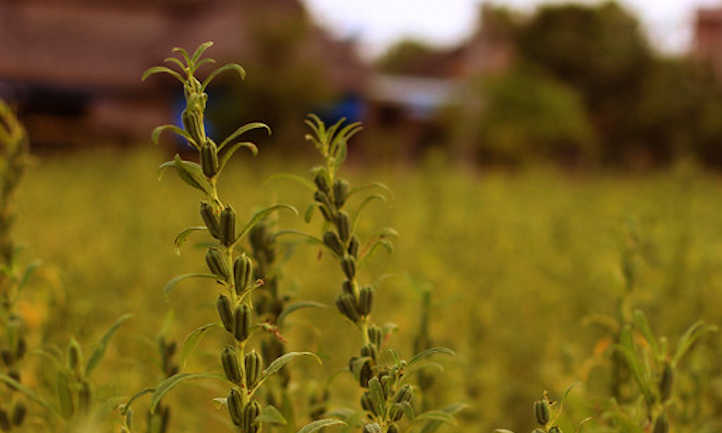
Harvesting your benne crops is easy, especially when the light and water content are right. Let’s cover how to collect those seeds and keep them in your kitchen year-round.
Harvesting
Remove seed pods from the stem when they are green, and then place them in a jar upright for cracking open. When you see the benne pods browning and breaking open slightly, this is a surefire sign those seeds need to be harvested. Harvest from lower on the plant while your benne plants still flower near the top. This gives you multiple harvests.
Remove seed pods from the stem by snapping them off with your hands or clipping them with garden shears. Do this right at the point where the pod connects to the plant’s central stalk, where the flower was. Place them on newspaper, parchment, or some other dry area. Here they’ll be dried to prevent spoiling. To winnow out the seed from chaff, break open pods when they are dried, and remove the seeds carefully. Leaves can be harvested directly from the benne and used right away.
Storing
Unlike some seeds, sesame contains a lot of oil which can spoilage. To prevent the spoiling of your crop let the seed pods dry on a dry surface (on newspaper or parchment paper) until they crack. Then move seeds into a storage container. Use a mason jar or airtight container to store your seeds. A plastic bag may work. Whatever container you use, make sure it can provide adequate room to store the number of seeds you’ve harvested. If you use the seeds right away, put them in a dark dry cabinet. For longer storage, place them in the freezer. Dried seeds keep for six to twelve months, and roasted seeds store up to one year in a cupboard.
For cooking the leaves, use them right away. If you must store them, place them in a plastic bag between parchment. Benne leaves don’t keep long, so eat them as soon as you can.
Troubleshooting
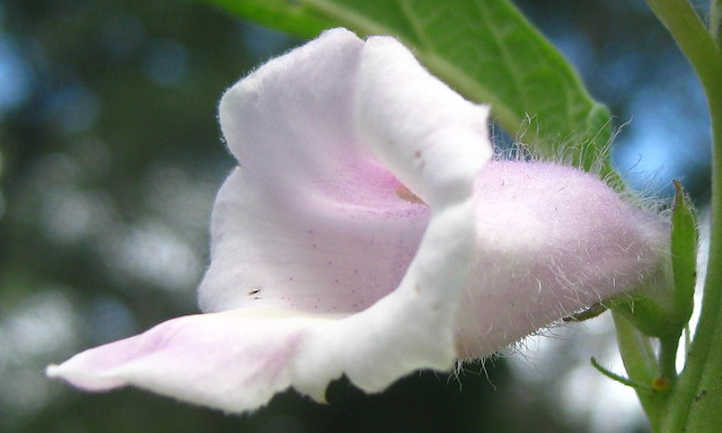
Most benne diseases are related to improper growing conditions. There are insects who enjoy snacking on seeds, leaves, and flowers too. Let’s cover a few issues you could encounter when growing sesame seeds.
Growing Problems
Too much water will kill a sesame plant. This can mean just a few hours of standing water. To prevent wet feet, mound your plant so water will run down the sides rather than sit at the base where roots rot and die off. Proper soil content will prevent excess moisture.
Too much heat causes premature production, but the biggest concern is too little heat. Transplant seedlings at the right time, two months after the last frost. Growth stunts on sesame at 60 degrees. Anything below that can kill your plant.
Pests
Small members of the Aphidoidea family called aphids suck sap from the leaves of sesame plants. To rid your sesame of aphids, use neem oil. Reapply neem as needed, no more than every seven days.
The sesame leafhopper or Orosius albicinctus is another sapsucker related to aphids. A sign of leafhopper infestation is curling, browning, or reddening leaves. Neem oil is also a good treatment for sesame leafhoppers. A capsaicin spray will also keep them away.
Thrips leave silver scars on leaves in cracks and folds of plant material as they feed. Use minute pirate bugs, lacewings, or ladybugs, their natural predators, to control thrips. If this doesn’t work, try foliar applications of pyrethrins weekly. Neem oil also works here.
Cutworms and leaf rollers are larval insects that feast on plants. They grow into moths that carry on the cycle of feeding, mating, and reproduction. Try hand-picking the larvae off your plant into a small container of soapy water. If you must spray your plants because the infestation is high in number, try Bacillus thuringiensis sprays. Neem oil prevents eggs from hatching.
Diseases
Aster yellows, sometimes called sesame phyllody, is a disease caused by phytoplasma. It can be transmitted by leafhoppers. Aster yellows can cause flower deformation, chlorosis in the leaves, stunted growth, and more. It is most common in areas with cool, damp summers, as both the phytoplasma and the leafhoppers don’t survive heat well. There is no cure for aster yellows, and infected plants should be destroyed. Prevent the spread of this disease by using pesticides to prevent leafhoppers. Later planting during hotter weather may also help to avoid disease transmission.
Alternaria leaf spot can create dark rings on leaves. A liquid copper fungicide is effective at preventing further spread. Remove damaged material, then spray the remaining plant with the fungicide. Avoid top watering to reduce the likelihood of leaf spotting.
Phytophthora blight also creates dark spots on leaves. For this pathogen, prevention is the best cure. Avoid excess moisture on foliage. If in a humid area, consider inoculating the soil with MycoStop or other bacillus strains to boost the plant’s ability to fight off the pathogen. Remove infected material and spray the remaining plant with a copper fungicide to reduce spread.
Damping-off also affects sesame seedlings. With damping-off seedlings fall over. Stems are brown, mushy, and unable to support nutrient transfer from leaf to root. Hot and wet conditions increase the likelihood of fungal infection. Many studies examine ways to control damping-off, but outside of applying mycorrhizae to the soil to prevent fungal infection, there is no viable treatment. Remove the damaged plants and do not plant susceptible species in that soil.
Frequently Asked Questions
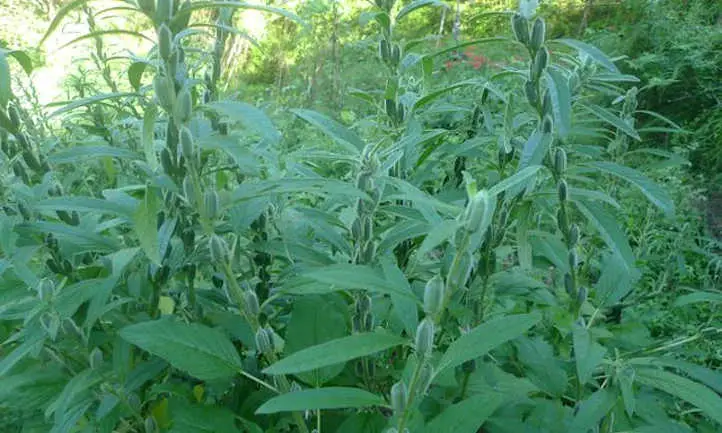
Q: Can you eat a sesame plant?
A: Yes, sesame leaf and seed can be eaten. However, leaves should be consumed within a few hours or they won’t have the same integrity. Seeds last much longer. Flowers are usually not eaten.
Q: Can you eat raw sesame seeds?
A: Yes, sesame seeds can be eaten raw. If you toast them, though, they’ll have a much more robust flavor.


